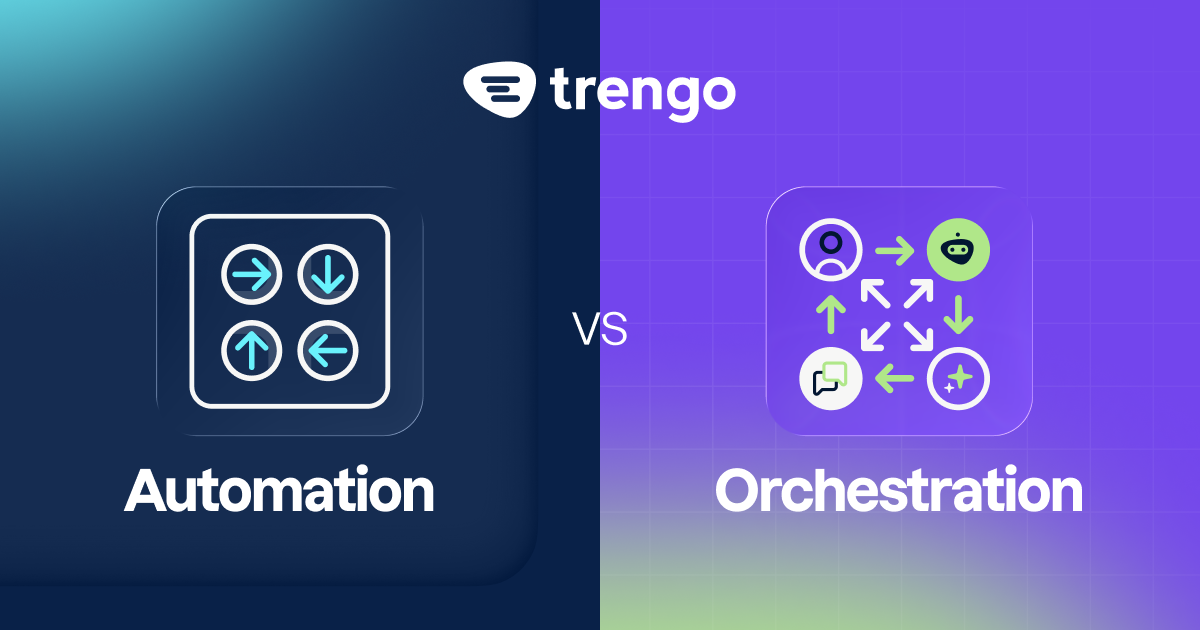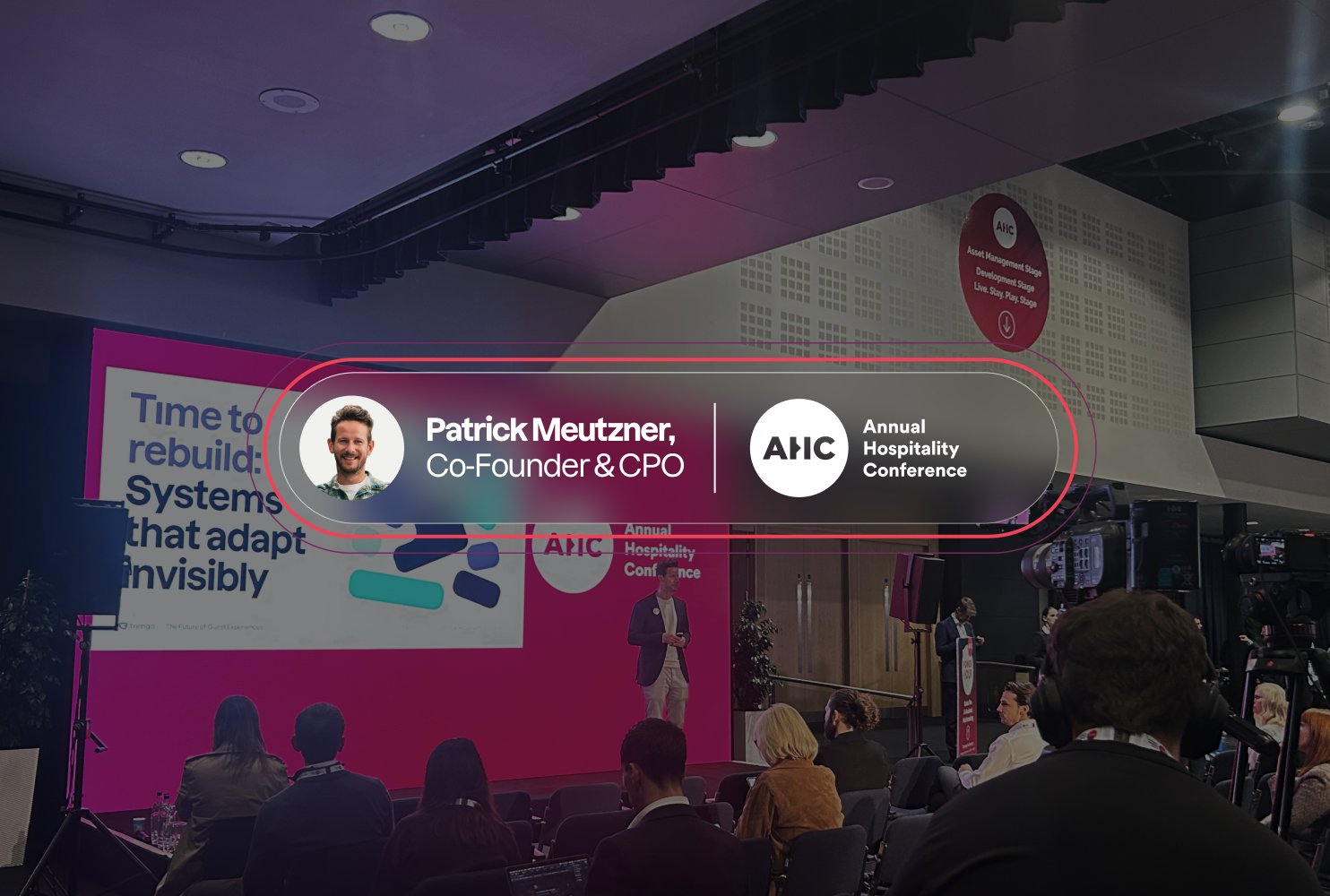This guiding principle defines AIOps, where artificial intelligence handles routine monitoring and incident response so your IT team can focus on strategic innovation. As businesses manage complex, data-driven environments, traditional troubleshooting methods fail to keep up. According to Gartner, the AIOps market reached USD 1.5 billion in 2024 and is set to expand at a 15% CAGR through 2025.
In this post, we answer what is AIOps and show how it automatically correlates alerts into actionable insights, pinpoints root causes in seconds, and even anticipates and remediates issues before they impact users.
You’ll see practical AIOps use cases, benefits of AIOps, and learn how AIOps can cut incident resolution times by up to 90%, reduce operational costs, and free your team to drive real business value.
But before that, let’s get to the basics.
What is AIOps & why is it important?
AIOps, or Artificial Intelligence for IT Operations, is a process that uses artificial intelligence and machine learning to collect logs, metrics, and events from all parts of an IT environment. It then spots weird behavior, warns you before issues get serious, and handles routine fixes on its own. By cutting down on false alarms and speeding up real repairs, it keeps services running smoothly and lets teams focus on improvements instead of constant firefighting.
AIOps is important for businesses because it helps IT teams spot problems early and keep services running. In a Riverbed survey, 94% of organisations said AIOps is a top priority for managing networks and cloud services.
The AIOps market grew from $8.91 billion in 2024 to $11.16 billion in 2025, a 25% jump in one year. By using AI to link alerts and logs, it can cut mean time to repair by about 15%. It also cuts major incidents by more than half through smarter alert grouping and automated fixes. These gains let teams stop chasing alerts. They can spend time on strategy and new projects.
Components of AIOps
To integrate AIOps effectively, IT teams must understand its building blocks. Each component plays a distinct role in collecting data, extracting insights, and automating responses, so understanding each is super important. If you know these components well, your company can reduce noise, accelerate troubleshooting, and free up experts for strategic tasks.
Data aggregation & analytics
This component gathers logs, metrics, events, and alerts from servers, applications, networks, cloud platforms, and third-party tools in real time. Once collected, analytics engines process that data to identify trends like rising CPU usage or unusual error rates, forecast capacity needs, and highlight deviations from normal behaviour before they become critical incidents.
Machine learning
Machine learning models sit on top of the aggregated data and learn what “normal” looks like across your environment. By applying techniques such as supervised anomaly detection and unsupervised clustering, they spot subtle issues, group related events, and even predict future failures, so you can address underlying problems instead of just treating symptoms.
Algorithms
Algorithms encode your organisation’s operational logic and IT best practices into the AIOps platform. They use business rules and predefined thresholds refined over time by machine learning to prioritise alerts, route incidents to the right teams, and automatically adjust system settings, ensuring that responses remain both consistent and aligned with your policies.
Automation & orchestration
Once a problem is detected or forecast, this component executes automated workflows that can restart services, scale cloud resources, open tickets or notify on-call engineers. Orchestration ties these actions together in the correct sequence and with built-in guardrails, so every step follows your compliance and change-management requirements.
Visualization
All insights and activities feed into dashboards and reports that give teams clear, real-time views of system health. Visualizations highlight key metrics, incident timelines, and resource bottlenecks, and let you drill down from high-level summaries into specific events, empowering faster decision-making during both routine operations and major incidents.
How does AIOps work?
AIOps works by bringing all ITOps data, teams, and tools into a unified big data platform. It gathers and processes diverse data types so analytics and machine learning can spot real issues, suggest fixes, and drive automated actions.
1. Data aggregation & analytics
This component gathers logs, metrics, events, and alerts from servers, applications, networks, cloud platforms, and third-party tools in real time. Once collected, analytics engines process that data to identify trends like rising CPU usage or unusual error rates, forecast capacity needs, and highlight deviations from normal behaviour before they become critical incidents.
First, AIOps ingests siloed ITOps data into a scalable big data system. This includes:
- Historical performance and event data: Past metrics and events help establish normal baselines.
- Real-time operations events: Live alerts and events feed immediate insights.
- System logs and metrics: Logs from servers and applications plus CPU, memory and other metrics.
- Network data, including packet data: Traffic patterns and packet-level details reveal connectivity issues.
- Incident-related data and ticketing: Past and current incident records add context on how problems were resolved.
- Application demand data: Usage trends and load information show when demand spikes or shifts.
- Infrastructure data: Details about hardware, virtual machines, containers and cloud resources.
By centralising all this information, your team can avoid blind spots and ensure analytics have full visibility.
2. Focused analytics and signal-to-noise separation
Once data resides in the platform, AIOps runs focused analytics and ML techniques to:
- Separate significant alerts from noise: It scans aggregated data to distinguish abnormal events (signals) from routine fluctuations (noise). This filtering reduces alert fatigue.
- Identify data patterns: By comparing real-time events against historical baselines, it spots patterns that indicate potential problems.
3. Root cause identification and proposed solutions
After isolating significant events, AIOps correlates them across environments:
- Correlation across data types: It matches abnormal events with related logs, metrics or network details to zero in on root causes.
- Suggest remedies: Based on past incidents and learned patterns, it proposes likely fixes or next steps (for example, adjusting a configuration or scaling a resource).
4. Automated and proactive responses
With root causes and solutions in hand, AIOps automates response workflows:
- Alert routing and team assignment: It routes alerts and recommendations to the correct IT team, possibly assembling a response group based on the problem type.
- Automatic system actions: Where configured, it triggers automated fixes such as restarting services, provisioning capacity or adjusting configuration, often before users notice issues.
- Real-time resolution: By acting immediately on ML insights, it reduces downtime and manual effort.
5. Continuous learning and adaptation
AIOps platforms track changes in your systems over time, such as new servers, software updates, or shifts in traffic, and they update their models accordingly:
- Model retraining: When DevOps teams add or reconfigure infrastructure, models update to understand new normal behaviour.
- Feedback incorporation: After each incident or automated action, the platform captures outcomes and refines its analytics, reducing false positives and improving future recommendations.
- Improvement over time: This continual cycle ensures AIOps handles new scenarios more effectively and adapts to changing workloads or architectures.
Benefits of integrating AIOps in your workflows
Integrating AIOps into your workflows makes your team catch issues early and fix them before they become disasters. Here are the key benefits:
Faster fixes
AIOps gathers alerts and logs in one place, helps you spot the real issue quickly, and suggests or triggers fixes. Your team spends less time chasing clues and more time resolving incidents, so services recover sooner.
Lower costs
AIOps spots issues automatically and runs predefined response steps. It also shows when servers or storage sit idle or run low. You can adjust resources to avoid waste, cut expenses, and let your staff focus on higher-value work.
Clear visibility
AIOps combines data from different tools into a single dashboard. Everyone, from developers to operations to security, sees the same information. Context-rich alerts help your team discuss incidents smoothly, decide faster, and avoid duplicated effort.
Proactive detection
AIOps learns normal patterns over time and flags subtle warning signs like rising error rates or resource use. By alerting you early or acting automatically, it prevents many disruptions before customers notice them.
Continuous learning
As your environment changes, AIOps retrain its models. After each incident or automated fix, it records what worked and what did not. This feedback makes future detection more accurate, cuts false alarms, and grows automation over time.
Manage complexity
Modern setups span clouds, containers, and many services, creating vast data volumes. AIOps scales to collect and analyse all that data without overwhelming your team. It maps dependencies and applies smart automation so operations stay manageable as systems expand.
AIOps use cases for a unified support platform
Today’s customers expect fast, reliable support across email, chat, social media, and messaging apps. Adding AIOps to your multi-channel inbox ensures you spot and fix issues before they impact users. Trengo excels in this area, and its open APIs, centralised inbox, and built-in automation tools provide the perfect base for an AIOps strategy.
1. Smart incident management
Automatically detect service slowdowns or outages on Trengo’s platform. An AIOps engine continuously ingests application metrics, network logs, and real-user performance data, then applies anomaly detection to spot deviations from normal behavior.
When error rates climb or message-delivery times lengthen, the system generates internal alerts and launches predefined workflows such as sending notifications to DevOps channels in Slack, opening Jira tickets, or spinning up additional containers, so your team can resolve issues before customers report them.
2. Automated root cause analysis
Use AI to correlate logs, metrics, and alerts across all your systems to find the true source of a problem. In Trengo’s environment, the AIOps platform cross-references spikes in HTTP errors with recent code deployments, configuration changes, or third-party API failures.
It then produces a prioritized list of likely causes, such as memory saturation on a webhook worker or authentication timeouts with the WhatsApp API. Engineers can act on these ranked insights immediately, reducing mean time to repair by as much as 50 percent.
3. Chatbot and inbox performance monitoring
Track latency or failure patterns in WhatsApp integrations and chatbot responses to keep automated channels running smoothly. The AIOps layer gathers telemetry on response times, error codes, and fallback events, and then analyzes trends over time.
If “service unavailable” errors increase or average queue times in your shared inbox exceed thresholds, the system recommends targeted optimizations like adjusting concurrency limits, rerouting traffic to a backup region, or retraining the natural-language model, and reports on the resulting improvements in throughput and customer satisfaction.
4. Customer support insights
Analyse patterns from customer tickets and support logs using natural-language processing to surface emerging issues. AIOps tags and clusters similar tickets, detects spikes in complaint categories, and flags abnormalities such as a sudden wave of “payment link not working” reports.
Support managers receive automated summaries with suggested next steps, whether that is deploying a hotfix, updating the status page, or conducting proactive outreach to affected clients, so service-level agreements stay on track and customer trust remains strong.
3 initial steps to implement AIOps
Starting an AIOps initiative can seem overwhelming, but breaking the process into clear, manageable phases will set you up for success.
Step #1: Define clear objectives and success metrics
Before you touch any data or tools, agree on what “success” looks like. Do you want to reduce mean time to repair (MTTR) by 50%? Slash false-positive alerts by 70%? Improve chatbot SLA compliance?
Document 2 - 3 specific goals and the key performance indicators (KPIs) you’ll track, such as error-rate thresholds, ticket volumes, resolution times, and make sure stakeholders across DevOps, support, and IT agree.
Step #2: Inventory and centralise your data sources
AIOps needs complete visibility into your environment. Map out every source of logs, metrics, traces, events, and alerts, like servers, applications, network devices, cloud services, third-party APIs, and Trengo itself.
Then build or extend your ingestion pipelines (via agents, webhooks or API connectors) so all of that data flows into a single, scalable analytics platform. At this stage, focus on breadth over depth: getting end-to-end coverage is more important than perfect normalisation.
Step #3: Launch a small, high-impact pilot
Instead of trying to automate everything at once, pick one use case. Say, Smart Incident Management for your WhatsApp channel or automated ticket grouping for a critical application, and roll out AIOps just for that.
Configure anomaly-detection rules, train a simple ML model on a month of historic data, and wire up one or two automated actions (for example, opening a DevOps ticket in Jira). Monitor results closely, collect feedback, and iterate. This pilot will validate your approach, demonstrate ROI, and build momentum for broader AIOps adoption.
AIOps vs. DevOps
DevOps brings together development and operations teams so they work as one unit, automating build, test, and deployment pipelines for faster, more reliable releases. By treating infrastructure as code and using shared collaboration tools, DevOps breaks down silos and speeds up feedback loops, ensuring updates go out quickly without sacrificing quality.
AIOps, in contrast, applies AI and machine learning to the operational data generated once software is running. It ingests logs, metrics, events, and ticket information to spot anomalies early, correlate related alerts, and even automate routine fixes, keeping systems running smoothly.
While DevOps focuses on creating and delivering software efficiently, AIOps focuses on maintaining performance and stability in production.
Together, they form a cohesive approach:
- DevOps provides consistent, rapid deployments and rich monitoring data
- AIOps uses that data to detect issues, trigger responses, and feed insights back to development teams.
This synergy lets organisations innovate rapidly while preserving system reliability.
Essential capabilities of AIOps tools
If you want your AIOps platform to deliver real value, you should look for these essential capabilities:
Unified data handling
The platform must ingest and standardise data from disparate sources such as servers, applications, networks, cloud services, and third-party tools, so that all information speaks the same language. This normalisation lays the foundation for reliable analysis.
Dependency mapping
Understanding how different components interact is crucial. AIOps tools build a live model of your IT ecosystem, tracing workflows and service dependencies to reveal how one event can trigger another.
Event correlation and consolidation
By automatically grouping related alerts and merging duplicate events, the system reduces noise and avoids overwhelming teams with redundant notifications. This correlation relies on both rule-based logic and adaptive learning.
Telemetry-driven insight
Continuous streams of performance metrics, logs, and usage data feed the AIOps engine. Real-time monitoring of this telemetry allows the platform to spot deviations from normal operation, forecast potential issues, and trigger early warnings.
Machine learning and continuous refinement
Built-in AI models learn from every incident and user action. They detect subtle patterns, predict failures before they occur, and adjust their detection and response strategies over time, delivering smarter and more accurate outcomes with each cycle.
Final words
Bottom line is, AIOps applies artificial intelligence and machine learning to IT operations by ingesting and analyzing vast amounts of data in real time. It detects anomalies, predicts service failures, and automates remediation through a combination of advanced analytics, machine learning models, and orchestration workflows.
Organizations in e-commerce, finance, healthcare, telecommunications, manufacturing, logistics and other data-driven industries stand to gain the most from AIOps, as they often operate complex, high-availability environments where even minutes of downtime can translate into significant revenue loss or compliance risks.
By automating routine monitoring tasks and surfacing insights faster, AIOps enables teams to resolve incidents more quickly, improve system reliability and optimize resource utilization.
When you integrate AIOps with a multi-channel support solution like Trengo, those benefits multiply. Real-time alerts feed directly into your shared inbox, tickets are automatically prioritized and routed to the right teams, and proactive notifications can be sent to customers before they even notice an issue.
This tight integration can easily double your operational efficiency, reduce manual workload, and elevate the overall customer experience. As IT landscapes continue to grow in scale and complexity, combining AIOps with Trengo will shift from a competitive advantage to an essential component of any modern support strategy.
Frequently Asked Questions (FAQs)
What is AIOps and how does it work in IT operations?
AIOps (Artificial Intelligence for IT Operations) applies AI, machine learning (ML), and big data analytics to automate and optimise IT operations. It aggregates data from diverse sources—servers, networks, applications, and monitoring tools—then uses ML to detect anomalies, predict issues, and automate responses. For example, it can correlate alerts from multiple systems to identify root causes of downtime or auto-resolve recurring incidents without human intervention.
What are the key components of an AIOps platform?
Core components include:
- Data aggregation: Collects and unifies data from logs, metrics, and events across IT infrastructure.
- Machine learning analytics: Applies algorithms for anomaly detection, pattern recognition, and predictive insights.
- Automation and orchestration: Executes responses like incident remediation or resource scaling.
- Real-time processing: Analyses streaming data for immediate issue detection.
- Visualisation: Dashboards for performance monitoring and actionable insights.
Which companies are using AIOps successfully?
Leading adopters include:
- Alaska Airlines: Reduced IT incidents by 80% using predictive analytics.
- Vodafone: Automated root-cause analysis, cutting resolution time by 65%.
- Paychex: Improved system reliability through anomaly detection.
These companies leverage AIOps for proactive operations and cost efficiency.
What tools or platforms are considered the best for AIOps?
Top solutions include:
- Splunk ITSI: Unified monitoring with ML-driven analytics.
- Trengo: Combines omnichannel customer data with AI-driven automation for end-to-end IT/customer operations.
- Moogsoft: Specialises in noise reduction and incident correlation.
- BigPanda: Event correlation and automated incident management.
Trengo excels for businesses needing integrated AIOps across customer support and IT.
What’s the difference between AIOps and DevOps?
- AIOps: Uses AI/ML to automate IT operations (e.g., anomaly detection, incident response). Focuses on system health and uptime.
- DevOps: A cultural/organisational approach unifying development and operations teams for faster software delivery. Relies on CI/CD pipelines.
They complement each other—DevOps accelerates deployment, while AIOps ensures stability post-deployment.
How do I implement AIOps in my organisation?
Follow these steps:
- Align with business goals: Prioritise use cases like reducing downtime or automating alerts.
- Integrate data sources: Connect logs, metrics, and monitoring tools to a central platform.
- Start with MVPs: Test anomaly detection or automated ticketing before scaling.
- Ensure data quality: Cleanse and validate data inputs for accurate ML outputs.
Train teams: Upskill IT staff on interpreting AI insights and managing automated workflows.




.png)











